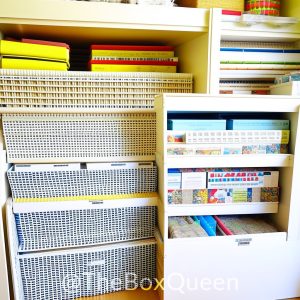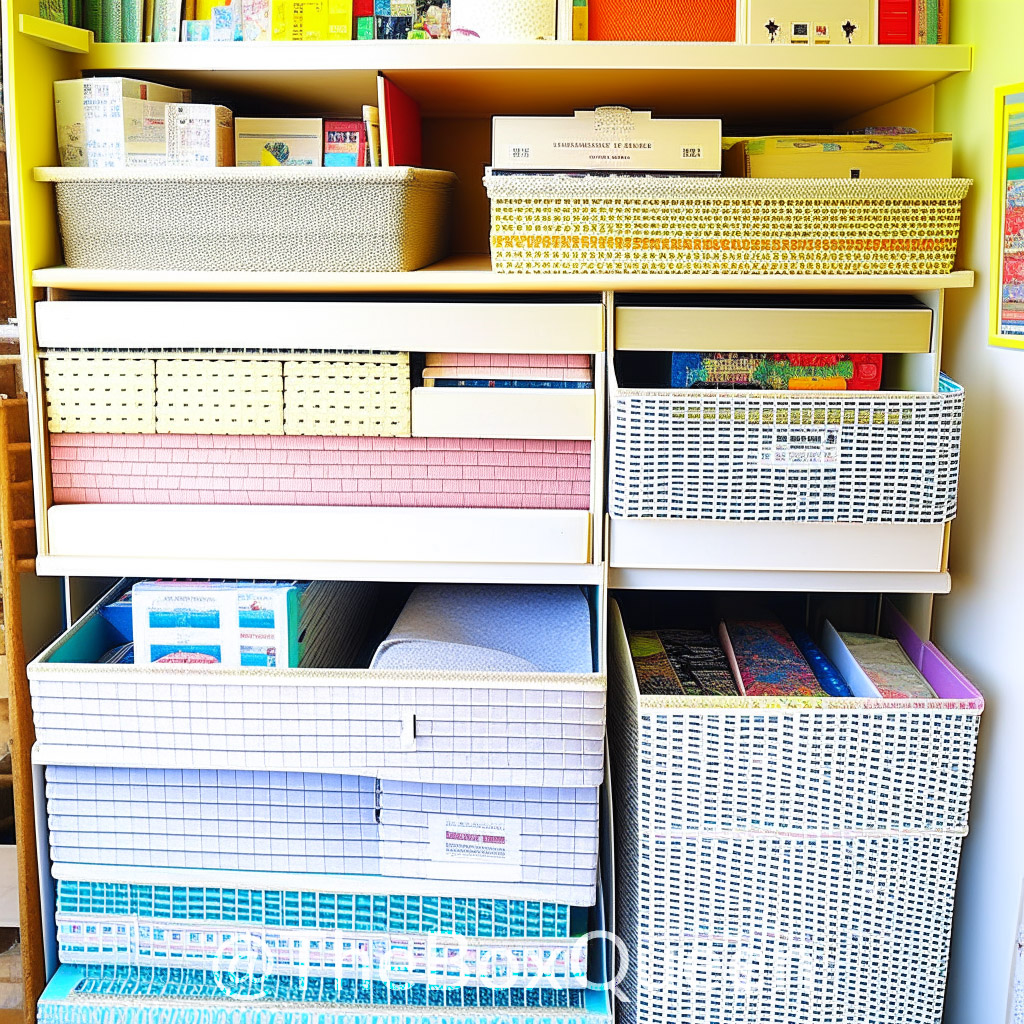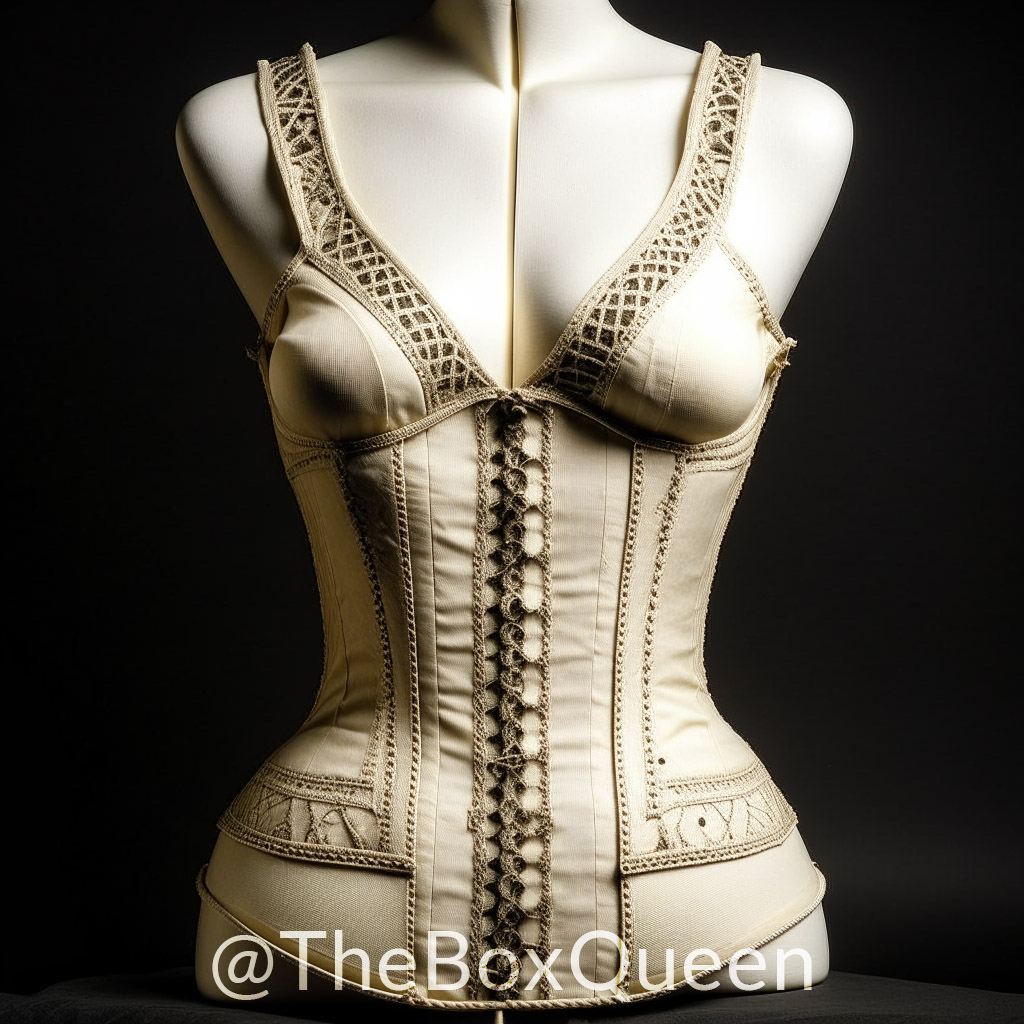Welcome to our thorough tutorial on sewing pattern storage, where we go into practical methods for maintaining an organised work area and making your sewing patterns simple to find. Not only can a clean, organised sewing space increase your productivity, but it also makes crafting more enjoyable. This post will lead you through several strategies to make sure your sewing patterns are organised, safeguarded, and prepared for your upcoming creative project.
The Value of Effective Storage for Sewing Patterns
For any DIY enthusiast, keeping a tidy sewing area is crucial. Organising sewing patterns effectively has the following benefits:
- Quick Access to Patterns
When your sewing patterns are neatly arranged, you can quickly find the one you need, saving you valuable time and lowering your level of aggravation. A logical organisation scheme eliminates the need to dig through stacks of patterns.
- Preservation of Patterns
Your sewing patterns will last longer if they are stored properly. In order to keep them in good condition and ensure that they may be used regularly for years to come, protect them from dust, moisture, and sunshine.
- Enhanced Creativity
A tidy workspace encourages innovation. You’re more likely to be inspired and motivated to start new projects when you can quickly see and access your patterns.
Practical Advice for Storing Sewing Patterns
Let’s go into the details of how to properly preserve your sewing patterns:
- Categorization is Key
Sort your sewing patterns into categories first. They can be arranged according to intricacy, season, or kind of clothing (dresses, skirts, and tops). To keep patterns from other categories apart, use magazine holders or clear plastic bins.
- Invest in Pattern Envelopes
All of the parts of a sewing pattern, including the instructions and tissue paper, are meant to be kept together in pattern envelopes. To guarantee that you have all the relevant information on hand, keep the original envelopes whole. Put the envelopes in plastic sleeves for further security.
- Utilize Filing Cabinets
If you have a sizable collection of patterns, filing cabinets are great for keeping them organised. Put your categorised patterns in the cabinet’s hanging file folders. To make retrieval simple, clearly label each folder.
- Binder Organization
To arrange your sewing designs, think about utilising binders. Place the pattern envelopes in transparent plastic sheet protectors and group them alphabetically in binders. You may rapidly and graphically cycle through your designs using this technique.
- Digital Cataloging
Making a digital catalogue of your patterns can be quite useful in the modern world. The pattern envelopes can be photographed, then you can sort the images into folders on your computer. This gives you a practical way to browse your collection without having to handle the patterns directly.
- Vertical Storage
Vertical storage is a game-changer for people who have a small amount of room. To stand patterns upright, use magazine holders or storage boxes made specifically for patterns. This not only frees up space but also makes choosing a pattern simple.
How to Safeguard Your Sewing Patterns
Your sewing patterns need to be well protected in order to last a long time:
- Avoid Direct Sunlight
Patterned envelopes can fade and the paper might become fragile in direct sunlight. Keep your patterns away from the sun’s rays when storing them.
- Climate Control
Extreme variations in humidity and temperature can harm patterns. To keep them from deteriorating, keep them in a climate-controlled space.
- Anti-Moisture Measures
Use silica gel packs or moisture-absorbing packets in your storage containers to control moisture levels and guard against mould and mildew.
Simple Retrieval Method
Easy retrieval is another important factor in an efficient sewing pattern storage solution:
- Label Everything
Fast identification requires labelling. The titles of the categories and subcategories should be clearly written on storage bins, files, and binders.
- Create an Index
Make an index listing all of your patterns and their locations for larger collections. This index may be a printed page or an electronic spreadsheet.
- Regular Maintenance
Review your storage system for sewing patterns on a regular basis. Remove any patterns you don’t need or don’t intend to use to reduce clutter.
Utilising Your Crafting Space to Its Fullest
Just getting started with organising your sewing pattern storage will help you make the most of your available workspace. To maximise your creative refuge, take into account the following extra advice:
- Designated Workstations
Create specific workstations for pressing, stitching, and cutting. Your workflow will be streamlined, and your materials will remain organised.
- Storage for Notions
Make sure your sewing supplies are arranged and stored similarly to how you arranged your patterns. Jars, small containers, and compartmentalised boxes are excellent.
- Inspiring Decor
Personalize your creative space with inspiring decor. To spark your creativity, put completed products on display, hang artwork, or include a vision board.
- Comfort and Lighting
Put illumination and comfort first. To establish a comfortable and effective setting, spend money on an ergonomic chair, sufficient lighting, and effective ventilation.

Conclusion
Any sewing lover will benefit from a well-organized system for storing sewing patterns. You not only save time and work, but it also improves your crafting experience as a whole. You may foster a creative environment by classifying your patterns, taking precautions, and putting in place simple retrieval methods.
Explore additional advice and insights at The Insider’s Views if you want to take your crafts to the next level. We provide helpful tools, such as in-depth articles on a range of subjects, from sewing to increasing traffic to your website. Always keep in mind that a tidy sewing area is the ideal environment for numerous hours of joyful creativity. Merry making!
Sewing Pattern Storage: Frequently Asked Questions
It makes sense that as we learn more about sewing pattern storage, you’ll have questions about the best methods, strategies, and ideas for keeping your workspace tidy and motivating. To provide you a thorough grasp of efficient sewing pattern storage, we answer some frequently asked questions here.
- Why is sewing pattern storage important?
Organising sewing patterns well has a number of advantages. It improves the overall creativity in your office, makes it simple to find patterns, and keeps the patterns’ quality. A seamless and joyful crafting process is facilitated by well-organized patterns.
- How should I categorize my sewing patterns?
Your preferences may affect how things are categorised. Patterns can be arranged according to intricacy, season, or type of clothing (dresses, skirts, or tops). Pick a strategy that makes sense to you and makes it simple for you to locate the required pattern.
- Should I keep the original pattern envelopes?
It is advised to maintain the original pattern envelopes. For each pattern, they provide directions and crucial information. By putting the envelopes in plastic sleeves, you can further safeguard them.
- What’s the best way to store patterns in a small space?
If you have a small space, think about using magazine holders or pattern storage boxes for vertical storage. These enable you to stand designs upright, making the most of available space while maintaining their accessibility.
- How do I protect patterns from sunlight and moisture?
Patterns should be kept out of direct sunlight if you want to protect them from the sun. Consider using silica gel packs or moisture-absorbing packets in your storage containers for moisture protection to stop mould and mildew from growing.
- Can I create a digital catalog of my patterns?
Absolutely! Making a digital catalogue is a practical choice in the digital era. Take pictures of the pattern envelopes and arrange them on your computer into folders for simple navigation.
- What’s the benefit of using filing cabinets for pattern storage?
If you have a significant collection of patterns, filing cabinets are great for keeping them organised. They give defence against dust and wear, a methodical technique to classify and access patterns, and they deliver.
- How often should I review and update my pattern storage system?
A storage system needs to be maintained frequently to be successful. Regularly go over your patterns and get rid of those you don’t need or don’t intend to use. This keeps your collection current and reduces unneeded clutter.
- Should I invest in specialized pattern storage containers?
Keep patterns organised and safe by storing them in specialised containers like pattern storage boxes, magazine holders, or clear plastic bins. Pick containers based on the size of your collection and available space.
- How can I optimize my entire crafting space?
Beyond just storing patterns, your crafting space needs to be optimised. To establish a productive and fun workplace, designate specific workstations, arrange sewing supplies, make the room your own with creative décor, and make sure that the lighting and seats are comfortable.
- Where can I find more crafting and organization tips?
Explore The Insider’s Views for additional organisation and crafting advice, as well as suggestions on increasing traffic to your website. Our website provides insightful information and in-depth articles on a range of subjects, including sewing and SEO.




